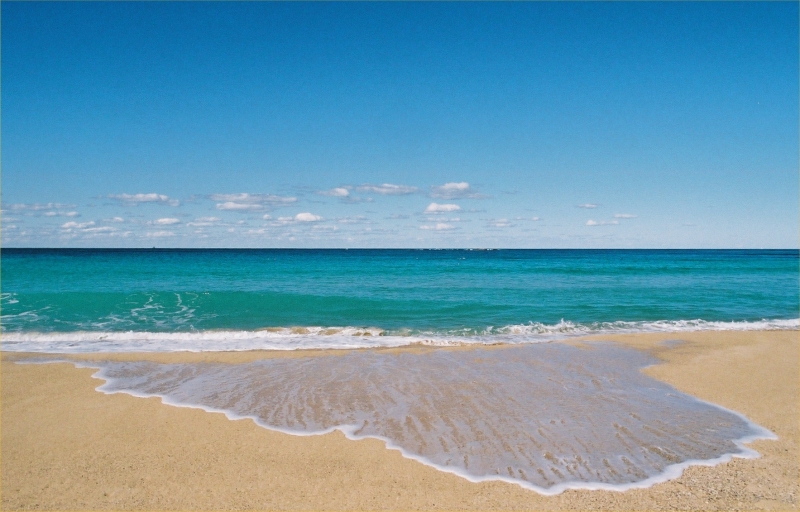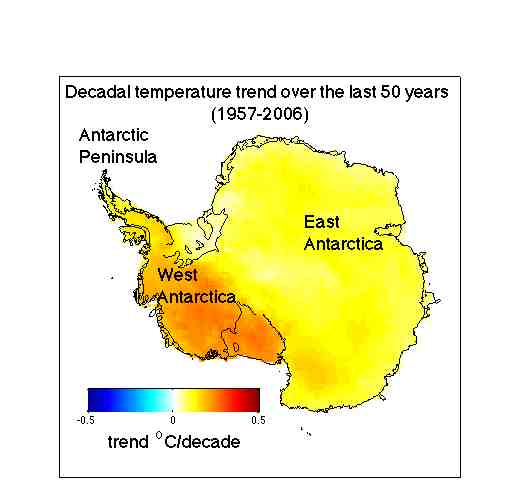Susan Solomon, ozone hole luminary and chair of the Nobel Prize winning IPCC, and her colleagues, have just published a paper entitled “Irreversible climate change because of carbon dioxide emissions” in the Proceedings of the National Academy of Sciences. We at realclimate have been getting a lot of calls from journalists about this paper, and some of them seem to have gone all doomsday on us. Dennis Avery and Fred Singer used the word Unstoppable as a battle flag a few years ago, over the argument that the observed warming is natural and therefore there is nothing that humanity can do to alter its course. So in terms of its intended rhetorical association, Unstoppable = Burn Baby Burn. But let’s not confuse Irreversible with Unstoppable. One means no turning back, while the other means no slowing down. They are very different words. Despair not!
Irreversible Does Not Mean Unstoppable
 ) (
) ( ) (
) ( ) (
) ( ) (
) ( )
) 
 The paper shows that Antarctica has been warming for the last 50 years, and that it has been warming especially in West Antarctica (see the figure). The results are based on a statistical blending of satellite data and temperature data from weather stations. The results don’t depend on the statistics alone. They are backed up by independent data from automatic weather stations, as shown in our paper as well as in updated work by Bromwich, Monaghan and others (see their AGU abstract,
The paper shows that Antarctica has been warming for the last 50 years, and that it has been warming especially in West Antarctica (see the figure). The results are based on a statistical blending of satellite data and temperature data from weather stations. The results don’t depend on the statistics alone. They are backed up by independent data from automatic weather stations, as shown in our paper as well as in updated work by Bromwich, Monaghan and others (see their AGU abstract,